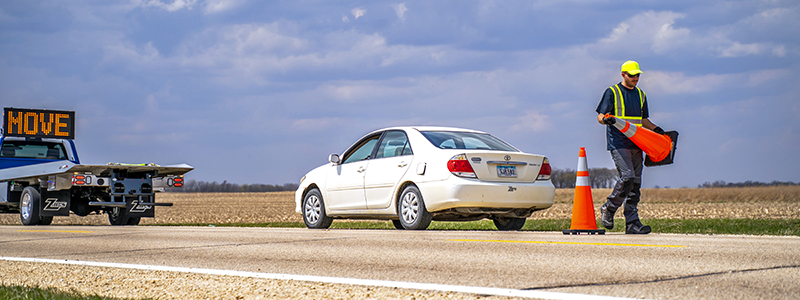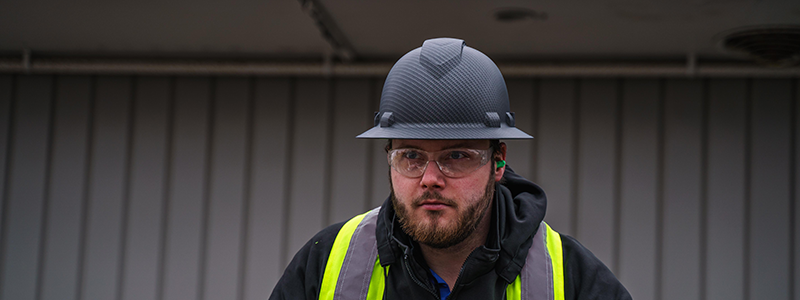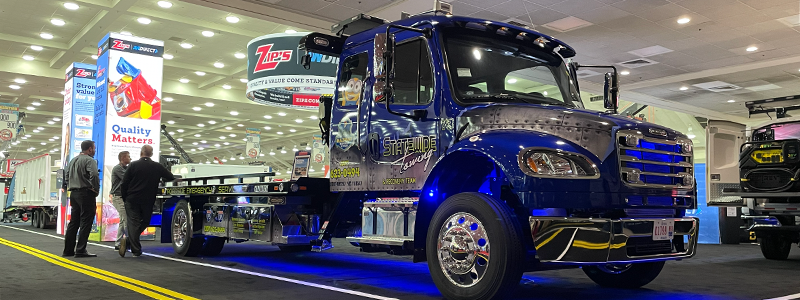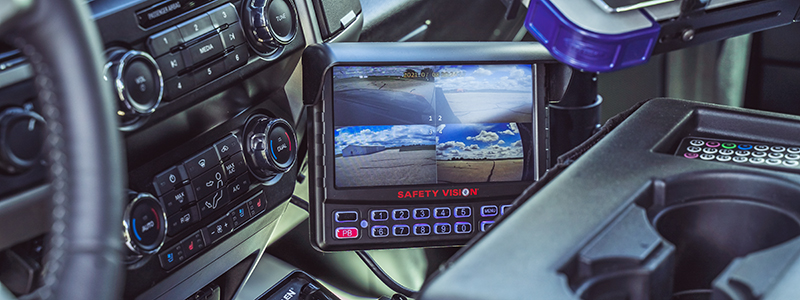Understanding the Basics: Cone Types, Sizes, and Colors

Traffic cones are one of the most common—and commonly misused—tools in traffic control. At first glance, they seem simple: bright, visible and easy to deploy. But using them effectively, especially in environments involving high-speed traffic or nighttime conditions, requires understanding the rules and guidelines laid out in the Manual on Uniform Traffic Control Devices (MUTCD).
This guide breaks down the key points from the MUTCD (11th Edition, Dec. 2023) and helps you choose and use the right cones for the right situations.
1. Cone Colors: Why Orange Matters
While cones are available in nearly every color, orange is the only color officially recognized in the MUTCD for Temporary Traffic Control (TTC). Other colors (like blue, green, pink, or even school or company colors) may be used for organization or branding, but they aren't part of the MUTCD’s designated system for traffic safety.
According to Section 1D.05 of the MUTCD, each color in traffic control signage has a specific meaning. Here’s a quick overview of relevant ones:
- Orange: Temporary traffic control
- Red: Stop or prohibition
- Yellow: Warning
- Green: Permitted movements or direction
- Fluorescent Pink: Incident management
- Blue & Brown: Services and recreational signage
- Bottom line: Stick with orange for safety and legal compliance, especially on public roads.
2. Cone Heights: Pick for Speed & Visibility
Cone height matters—and it’s not just about being seen.
- 18” cones: Allowed on daytime, low-speed roads.
- 28” cones: Required on high-speed roads or at night.
- 36” cones: Recommended for enhanced visibility and readiness for both day and night conditions.
If you’re outfitting a service truck or a trailer that handles emergency scenes or roadside repairs, having a stock of 36” reflective cones ensures you’re prepared for virtually any scenario.
3. Reflective Stripes: Be Seen at Night
Cones used at night must be retroreflectorized for visibility. Here's how they should look:
28” to 36” cones: 6” white reflective band located 3–4” from the top and 4” band approximately 2” below the top band.
Cones over 36”: Must have alternating orange and white reflective stripes, each 4–6” wide, with a minimum of two orange and two white stripes.
This reflective pattern ensures cones remain visible even in low-light or adverse weather conditions.
4. Cone Weight: Heavier is Safer (Usually)
The ability of a cone to remain upright—especially when trucks pass at highway speeds—depends on its weight and base.
Minimum weight for highway use: 7 lbs. Heavier cones equal greater stability but are also harder to deploy in large quantities. Cones can be doubled up or paired with ballast rings or sandbags to prevent tipping.
Some cones have special knob indentations for easier handling. Choose wisely based on your team's physical workload and the environment.
5. Cones in Action: Temporary Traffic Control (TTC)
From Section 6K.03 of the MUTCD, here’s what proper TTC use looks like: Cones should be made from a flexible material that won’t damage a vehicle upon impact. They are used to:
- Channelize or redirect traffic
- Divide opposing traffic
- Mark short-duration maintenance zones or utility work
For nighttime or high-speed roadways, cones must be reflective and at least 28” tall.
Here are some stability tips. Use cones with weighted bases. Add just enough ballast to prevent displacement—but not so much that it becomes dangerous.
6. Arrow Panels & Dynamic Message Signs (DMS)
While cones are essential for marking the layout of a site, vehicle-mounted arrow panels or DMS are powerful tools for directing driver behavior.
These are especially important in emergency situations, lane closures, or during utility work. When used in combination with cones, they create a clear and safe pathway for drivers to follow.
Employers should ask: Are we using arrow panels when we should? Do we have DMS capabilities for major incidents?
7. Don’t Forget the PPE
It’s not just about cones. Protecting your team and the public also means ensuring workers are properly geared. Standard PPE for Temporary Traffic Control includes Class III high-visibility safety apparel, reflective gear, access to proper signage, cones and arrow panels.
If you’re cutting corners on PPE, you're not only risking lives—you could also be liable for non-compliance with federal safety standards.
8. Final Thoughts
Traffic cones may look simple, but effective usage requires understanding and applying the MUTCD standards. Choosing the right cone size, color, weight and reflectivity, using supporting equipment like arrow panels, and ensuring worker safety with proper PPE are all part of doing it right.
Whether you’re building out a service truck, prepping for a lane closure, or responding to an emergency scene, your traffic control setup should be planned, compliant, and visible—day or night.



%20blog%20thumbnail.png)







